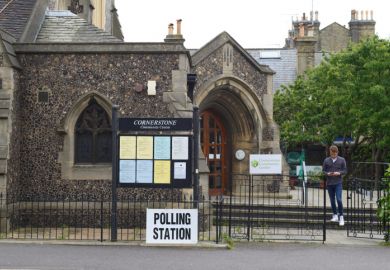A year ago, the then UK prime minister Theresa May welcomed a report into higher and further education in England from an independent panel that I chaired. She had asked us to look at both parts of tertiary education together, the first review since Robbins in 1963 to do so. It was a good question to ask then and is an even better one now.
Tertiary education is always a balance between social, economic and cultural objectives but the pandemic changes the dynamic. Unemployment and under-employment are likely to increase. A massive public sector deficit will require a finely honed economy to pay down. What we do at work – and how and where we do it – will change. Tertiary education must respond.
Education policy in England has been characterised by a sharp divide between higher and further institutions, especially after the former polytechnics became universities after 1992. Universities have been the priority, and Tony Blair’s target of getting 50 per cent of young adults into higher education was achieved last year. Further education, by contrast, has seen a steep decline in funding, such that the total number in post-18 education has actually declined. The bilateral approach needs to change in three respects.
First, we need to view higher and further education as an integrated solution to the same problem. The bridge should be technical and vocational education in England’s missing middle, levels 4 and 5. The building block should be modular, credit-based learning transferable between sectors, funded by a loan allowance to be drawn down over a lifetime.
Second, we must ensure that further education colleges are properly equipped. This means an increase in the rates paid for quality courses and qualifications; a reform of the institutional architecture, including more capital; and better information and guidance for learners. The present government acknowledged the need for change in the 2020 budget; a White Paper on further education is expected this autumn.
Third, higher education should be realigned with the country’s social and economic needs. This requires modifying the market model, which at one level has been a great success. Rising degree student numbers, particularly among the disadvantaged, a significant lifetime earnings premium for most graduates, a major contribution to national and local GDP and a high global reputation for research are all to be celebrated.
However, there were already signs that the dividend from university expansion, as currently delivered, had played out. These included graduate underemployment, wide variations in the earnings premium even between comparable institutions teaching comparable cohorts, and disappointing progression rates for disadvantaged students.
This is a public as well as a private issue. The Exchequer loses money on a third of all subjects studied by women and a quarter by men. The state writes off more on social studies subjects than on maths, computer science or engineering; more on communications and media studies than on agriculture and veterinary science; and more on creative arts than on any other subject. This is serious money: £12 billion in total and likely to rise with the demographic bulge and deteriorating economy. Without challenging the intrinsic worth of any subject – but simply the relative numbers taking them – there is a misalignment between the state subsidy and the economy’s needs.
The post-18 panel recommended that this be tackled by cutting undergraduate fees for home students to the average cost of an arts and humanities degree – £7,500 according to Universities UK – and a corresponding increase in government grants. These grants would be directed to more effective support for the disadvantaged and to quality courses, especially – but not solely – those aligned with the government’s industrial strategy. It may now be that such a fee cut would be too destabilising in the short term given the threat to high-margin overseas student income, which brings into play other options considered by the panel.
A softer version of the fee cut would be to extend the current freeze and to increase the teaching grant for strategic subjects by more than inflation. This would reduce the real value of fees over time and give the state a measure of control over where its subsidy lands. It would give institutions time to manage costs down, thus avoiding the double cliff-edge of a decline in overseas and domestic student income.
The panel also considered an alternative way to achieve funding differentiated by subject while preserving uniform tuition fees. This would be a payment back to government by universities offering over-supplied, low-cost courses. This “negative grant” could then be redirected to high-cost priority subjects.
A different approach would be for government to impose – or for universities to agree, as they did in the recent temporary support package – a cap on student numbers. Confining this to certain courses and/or institutions would allow a measure of direction without reintroducing overall number controls.
I do not for a moment imagine that these proposals will be welcomed by the sector, but surely enough is enough. All markets need management, and higher education, with no price mechanism or realistic risk of catastrophic institutional failure, is nothing like a real market.
These proposals would respect academic autonomy and research excellence while working in students’ best interests. By aligning England’s universities with the country’s rapidly changing social and economic needs, the role of this crucial sector in post-pandemic reconstruction would be ensured.
Philip Augar is the former chair of the post-18 education review panel. He writes in a personal capacity.
POSTSCRIPT:
Print headline: It is time to face up to the reality of the market
Register to continue
Why register?
- Registration is free and only takes a moment
- Once registered, you can read 3 articles a month
- Sign up for our newsletter
Subscribe
Or subscribe for unlimited access to:
- Unlimited access to news, views, insights & reviews
- Digital editions
- Digital access to THE’s university and college rankings analysis
Already registered or a current subscriber? Login








